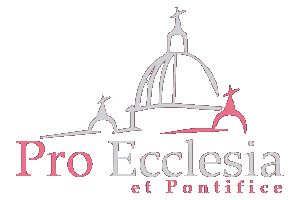

F O R C H U R C H A N D P O P E

THE ONLINE MAGAZINE OF PRO ECCLESIA ET PONTIFICE

Top ARTICLES
ROMAN CATHOLIC NEWS, COMMENT & OPINION
THE FLOCK - LATEST ISSUE
SELECTED ARTICLE
AUTUMN 2016 ISSUE

GRAHAM MOORHOUSE
For China's Catholics, Bishop John Han Dingxiang is a martyr. The scale of his personal sacrifice and pastoral commitment is both deeply moving and inspiring. By the time of his death in September 2007, John Han had spent 30 years in labour camps, in prison or under house arrest, all for the love of Christ.
When he was ill and dying, the authorities summoned his closest relatives, but no priest was allowed at his bedside. Within six hours of his death, the authorities had cremated him and buried him in a public cemetery; his tombstone did not even mention that he was a bishop. Chinese Catholics were naturally outraged.
Bishop John Han's resilience in the face of persecution dates back more than half a century. John Han was born on the 17 May 1939. In spite of the turmoil caused by war with Japan and the civil war between Communists and Nationalists, it was a time of rapid growth for the Church. In 1946, Pope Pius XII established the Catholic hierarchy in China.
John Han entered a minor seminary in 1952 at the age of thirteen. A mere three years earlier Mao Tse Tung had declared victory over the Nationalists and had begun to clampdown on what the left deemed "unpatriotic" activities.
Barely two years into his studies, John Han's seminary was disbanded. He would have to wait some thirty years for ordination. In the early 1950's, the communists were expelling priests from China and many bishops were imprisoned. Seminary superiors advised their students to flee China.
John Han, however, opted to remain and continue his studies secretly in the Underground Church. The authorities sought to split the Church by setting up an official Church that owed allegiance to the Communist authorities, those faithful and their priest and bishops who refused allegiance to the state church were known as the Underground Church.
John Han was among those faithful who remained loyal to the Underground Church, resisting all government interference. In so doing they put their lives on the line for Christ, constantly in danger of arrest and even torture. In 1960 John Han was arrested and sent to a "reform through education" camp. It is interesting to note how the left abuses education to form people to their ideology; secular liberals are doing something very similar with the British education system today. Some 40 million people were sent to these camps. Survivors have described working in sub-zero conditions, amidst filth and degradation. Beatings were commonplace and many died from illtreatment and sheer exhaustion.
It was now the late 1960's and the Church had outwardly disappeared. All Catholic churches had been closed and many demolished. China would not awake from this ‘nuclear winter’ until after Mao's death in September 1976. The new leader was a little more tolerant, and among the prisoners of conscience released from the camps at this time was John Han. He found work as a teacher and was ordained on 21st November 1986. Less than three years later he became a bishop.
However, in spite of the increased leniency, the authorities remained implacably opposed to the real, i.e "underground", Catholic Church. In the ten years following being raised to the episcopacy, John Han was arrested eleven times!
The last time Bishop Han enjoyed freedom was on the 20th November 1999. He was arrested while conducting a retreat for some religious sisters. The final eight years of his life were spent in custody with his health in decline. But he did not disappear completely. Footage shot in 2005 captured him on the balcony of a police detention facility. His frail frame, clad in white, appeared behind the bars of the cage that enclosed the balcony. He was obviously aware of the cameraman concealed in the shrubbery below the balcony. He first ensures his jailors do not suspect anything amiss by turning to clean the windows with a rag. Once he is confident the coast is clear, he makes the Sign of the Cross to the camera, unfolds a banner emblazoned with a religious slogan, and then in a poignant moment holds up a crucifix, pushing it through the bars and holding it above his head.
Bishop Han's extraordinary life survives him in ways other than this clandestine video footage, he was an accomplished self-taught artist, and presented some of his watercolour work to Aid to the Church in Need. These exquisite studies of fish and butterflies were given to ACN in 1998.
In spite of the authorities’ continuing efforts to divide the faithful, the flock of his diocese remain united by his memory. The authorities fear John Han even in death. During the Beijing Olympics, plainclothes police closely guarded his grave. But the people revere him as a martyr saint and regularly visit his grave. And many young Chinese men are studying for the priesthood, because they were inspired by Bishop Han's witness unto death.
AVAILABLE NOW
S E L E C T E D A R T I C L E S

AUTUMN
2016












